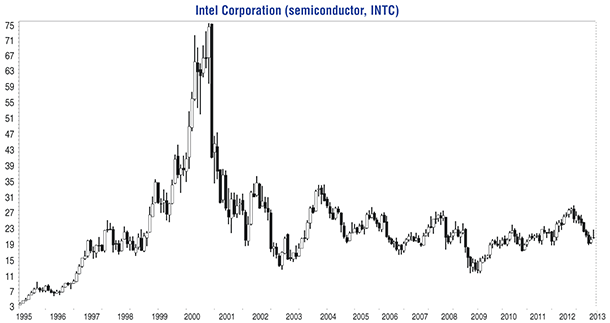
FIGURE 1: A PRICE MOUNTAIN. Here you see a monthly chart of Intel Corporation (INTC) on a linear scale. Those who bought and held this stock in the 1990s have yet to see the stock recover to the peak of nearly $76 in late 2000.
TRADING TECHNIQUES
There’s No Holding On
There comes a time when you have to sell your long-term holdings. Here’s how you know when to sell them.
Trading buy & hold may sound like an oxymoron, but one day the hold in buy & hold will become a sell. Usually, when someone buys and holds a stock for the long term, it means they will own it for years, sometimes decades. In 1990 I bought shares of Michaels Stores and after 17 years, had to sell them. I didn’t have a choice; the company went private. Fortunately, I made almost 5,000% on the trade. Whether you have a choice or not, most buy & hold investments have an expiration date — a time when it’s best to sell.
WHEN IS THAT TIME?
Take a look at the chart in Figure 1. In the period leading to the bear market in 2000, many semiconductor stocks showed a profile similar to that of Intel (INTC).
In the late 1990s, the value of INTC made tremendous gains, but the velocity ramped up in 2000 when the froth for technology stocks pushed them to Everest heights. Then look what happened. The tech bubble burst and the bear market did the rest. Since then, the stock has been stuck at base camp.

FIGURE 1: A PRICE MOUNTAIN. Here you see a monthly chart of Intel Corporation (INTC) on a linear scale. Those who bought and held this stock in the 1990s have yet to see the stock recover to the peak of nearly $76 in late 2000.